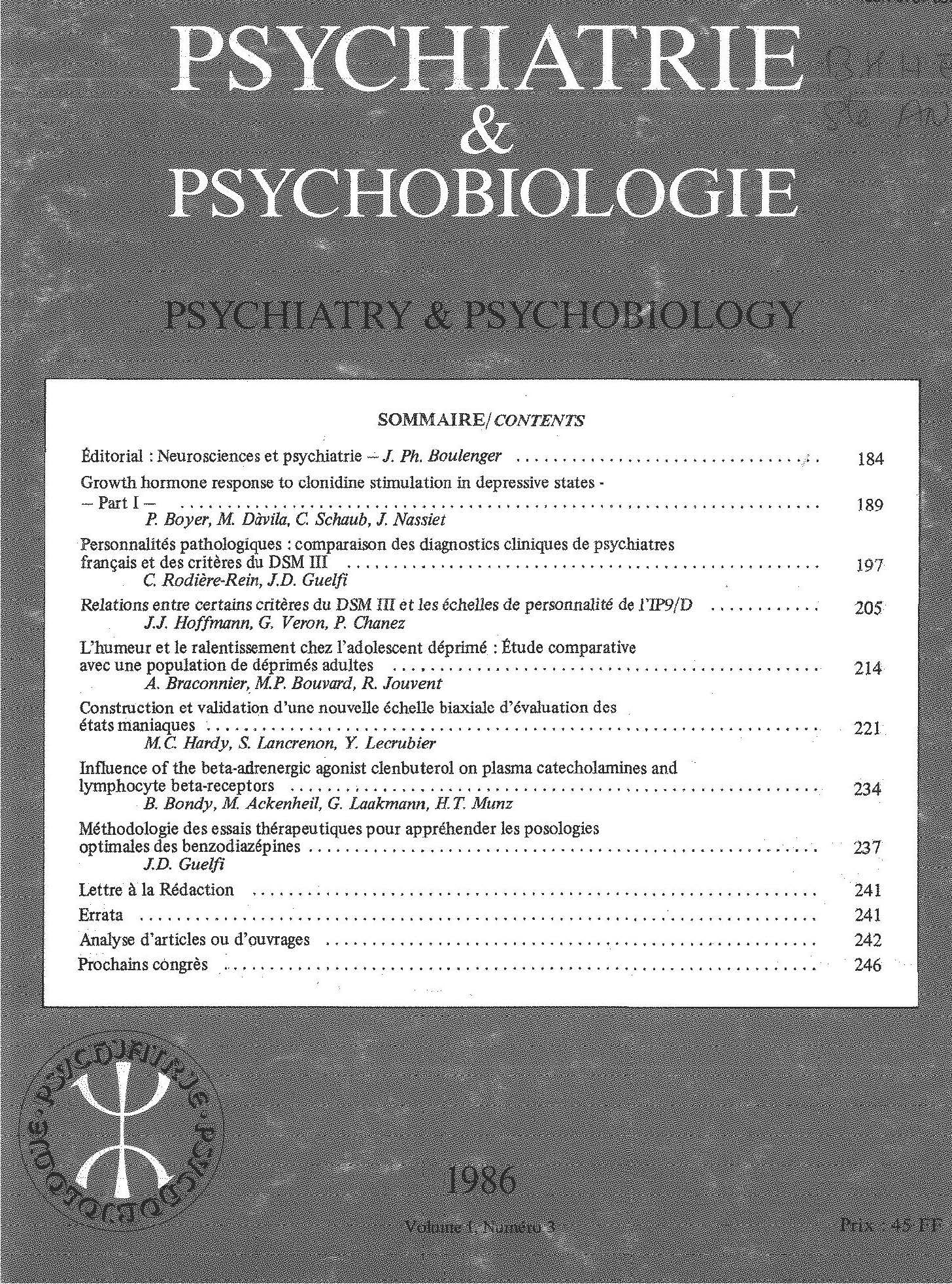Article contents
Apomorphine-induced operant deficits: a neuroleptic-sensitive but drug- and dose-dependent animal model of behavior
Published online by Cambridge University Press: 28 April 2020
Summary
In order to further assess the alterations which might underly behavioral deficits associated with a reduced dopaminergic transmission, the effects of apomorphine at doses thought to stimulate dopaminergic autoreceptors were studied on rat operant behavior.
Low doses of apomorphine caused a reward deficit when animais were shifted from continuons reinforcement to fixed ratio schedules of food delivery (fig. 1). This effect could be accounted for by a decreased ability of secondary reinforcers to sustain responding and/or by a disruption of cognitive processes (Table 1). The apomorphine-induced reward deficit in the fixed ratio 4 schedule was reversed by “disinhibitory” neuroleptics including amisulpride, pimozide, pipotiazine and sulpiride, at low to moderate doses. Conversely, “conventional” neuroleptics such as chlorpromazine, fluphenazine, haloperidol, metoclopramide and thioridazine were found inactive in reversing the deficit caused by apomorphine (fig. 2). Results obtained after lesion of dopaminergic neurons by 6-hydroxydopamine suggested that the behavioral deficit induced by apomorphine was related not so much to a reduction in dopaminergic activity in given restricted areas such as the VTA (fig. 3), the nucleus accumbens (fig. 4) or the prefrontal cortex (fig. 5), as to a functional imbalance between mesolimbic and mesocortical dopaminergic systems.
Résumé
Afin de déterminer les modifications qui pourraient être responsables des déficits comportementaux associés à une diminution de la transmission dopaminergique, les effets de l'apomorphine, à des doses supposées stimuler les autorécepteurs dopaminergiques, ont été étudiés dans une situation de conditionnement opérant.
A doses faibles, l'apomorphine provoque un déficit comportemental lorsque les animaux sont placés dans une situation dans laquelle ils doivent effectuer non plus un appui mais une séquence d'appuis sur le levier d'une boîte de Skinner pour obtenir une boulette de nourriture (fig. 1). Une réduction de la capacité des stimuli secondaires à maintenir un comportement et/ou une perturbation des processus cognitifs pourrait expliquer le déficit provoqué par l'apomorphine (Tableau 1). Ce déficit est supprimé par les neuroleptiques “désinhibiteurs” tels que l'amisulpride, le pimozide, la pipotiazine et le sulpiride à doses faibles ou modérées. A l'inverse, les neuroleptiques “classiques” tels que la chlorpromazine, la fluphénazine, l'halopléridol, le métoclopramide et la thioridazine ne réduisent pas le déficit induit par l'apomorphine (fig. 2).
Les résultats obtenus après lésion de neurones dopaminergiques par la 6-hydroxydopamine suggèrent que c'est moins une diminution de l'activité dopaminergique dans des structures telles que l'ATV (fig. 3), le noyau accumbens (fig. 4) ou le cortex préfrontal (fig. 5) qu'un déséquilibre fonctionnel entre les systèmes dopaminergiques mésolimbiques et mésocorticaux qui est à l'origine du déficit induit par l'apomorphine.
Keywords
- Type
- Research Article
- Information
- Copyright
- Copyright © European Psychiatric Association 1987
References
References/Bibliographie
- 5
- Cited by



Comments
No Comments have been published for this article.